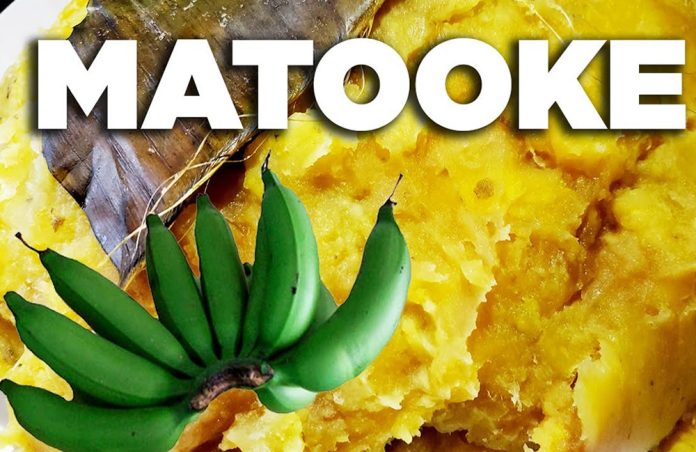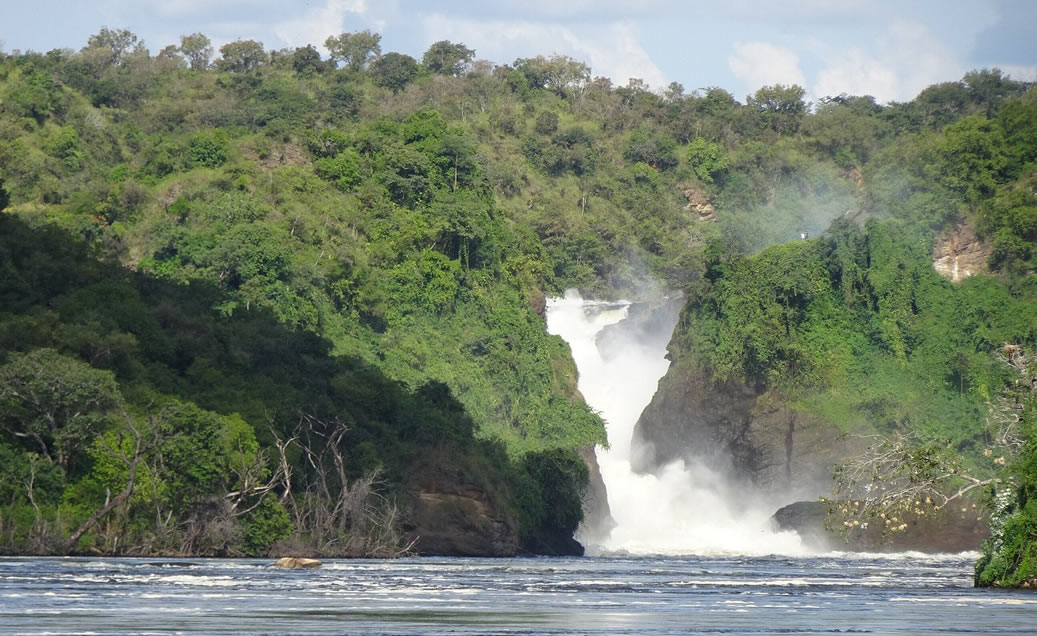Matooke is the staple food of Baganda, the most dominant tribe in Uganda. It is also widely eaten in several countries in East Africa; Central Uganda, Rwanda and parts of Northern Tanzania.
Bananas are a staple food crop in Uganda, Kenya, Tanzania (Old East Africa) and other great lakes countries.They are also known as the Mutika/Lujugira subgroup.
Matooke is Buganda’s traditional dish and one of the common foods in Uganda.The green plantains are peeled and cooked in water or steamed in banana leaves. Matooke is Buganda’s traditional dish and one of the most common foods in Uganda. It also contains anti-oxide that can protect your body from damage.On the other hand,contains Vitamin B6 assists the body converting food into energy.It is good for heart,health and improves brain function. Other minerals in matooke includes; fibre, potassium, phosphorus, Zink, magnesium etc.
Earlier lone, East African Highland bananas were introduced early from Southeast Asia during the fifteenth to sixteenth centuries AD, probably via trade.They are genetically distinct from the other AAA cultivars having evolved from the African great-lakes region for over a millennium.They are found nowhere in the World,and the African great lakes has been called the secondary center of banana diversity,because of these,East African highland bananas are considered to be especially diverse in Uganda, Burundi and Rwanda.
However, genetic analysis has revealed that all East African Highland bananas are genetically uniform,having most likely originated from a single ancestral clone(introduced to Africa within the past 2000 years) that underwent population expansion by negative propagation.
East African Highland bananas are so important as food crops,the local name ‘matooke'(or locally known as matooke) is synonymous for the word”food” in Uganda,also a portion of the East African.
Matooke Cultivation
Bananas are planted in holes dug by hands and provided spaces for easy growing.Mix rotten or compost tins with top soil and return into the hole.from there put the sucker in the middle of the hole and cover with the rest of the top fertile soil.With regular rainfall received, in the given area where you planted the suckers, this will help them develop and grow well.
Therefore, the farmer is expected to look after his/her plantation regularly.
Weeding; spraying of glypphosate[round up] can help the banana plants grow easily favorably.
A farmer can also use his hoe by digging and removing unwanted weeds from the garden so as to favor the bananas to grow well and faster.On the other hand,removal of male buds or [suckers] which also helps fruit development and increase bunch weight.
Male buds are removed from the banana plant to favor it bringing more yields.
Bunch covering,here the farmer uses dried banana leaves of the plants which is also economical and prevents the plant from direct exposure of the sunlight.
With time,the bunch will get heavily.So due to heavy weight of the bunch,the plant goes out of balance and the bearing plant may loose balance.This may lead to the affection of the quality.Therefore;a farmer should apply strong bamboo sticks and place them against the stem leaning sides so as to apply balance of the banana plant.
Harvesting, the farmer uses a knife or panga and cut in the middle of the stem bringing the bunch on the ground slowly to avoid the bunch from getting damaged thus preventing quality loss.
Food Preparation
Matooke are peeled using a knife,wrapped in the plant’s leaves(banana leaves) and set or placed in a cooking pot at the top of banana stalks under on the bottom filled with water.The Pot is then placed on a cooker or stove or charcoal-stove or wood-fire and then the food prepared (matooke) is steamed for a couple of hours.
Water is then added multiple times as a way of curbing overheating the cooking-pot.The stalks deep in the pot keeps the leaf wrapped fruits above the level of hot water.While uncooked, the matooke is white,and fairly hard;whereas;cooking turns it soft and yellow in color.
The Matooke is then mashed while still wrapped in the leaves and ofted served on a fresh banana leaf. Matooke is typically eaten with source made of vegetables ground peanut,or some type of meat.
In Uganda, matooke are commonly known of a usage popular breakfast locally known as “katogo”. This is commonly a combination of peeled bananas and peanuts or beef and goat meat in a common or regular manner.
Traditionally,the Baganda upon the right time of sharing the meal,they could gather and lay boiled banana leaves that wrapped the matooke. Seat on a ground dining sharing the meal deliciously.
East African Highland bananas are a sub-group that refers to about 200 individual banana cultivars(or clones). They can be sub-divided into five distinct groups of clones known as clone sets;
Mbidde or beer clone set
The mbidde clone set contains 14 cultivars. Mbidde refers to as “beer” and clones belonging to this clone set are usually used for making ‘banana beer’. There pulp is bitter and astringent with sticky brown excretions.
Nakitembe clone set
Nakabululu clone set
Nakabululu clones are soft textured and savory.They mature quickly,but their fruits are smaller and have lesser overall yield per bunch.
Musakala clone set
Musakala clones are characterized by slender fruits with bottled-necked tips.Other characteristics are the same as the preceding three clone sets.
Nfuuka clone set
Nfuuka clones are characterized by inflated,rounded or almost rectangular fruits with intermediate-shaped tips.The bunch shape is mainly rectangular.Other characteristics are the same as other clone sets.It is the most diverse of the five clone sets, a probable result of its tendency to mutate more frequently. They bear heavy compacted bunches and are thus more often exploited commercially than other clone sets.
Over various importance recorded from matooke includes curing skin disease.This is mostly common in puberty line stage of producing bad ordour (smelling). Water from removed from the cooking pot after steaming matooke(banana stalks and water).It may look at time grey or black in color, so a person here is expected to bathe or smear his/her body with this water. That is a natural special healer in regard with (Ebombo).
Economically;East African Highland bananas are one of the most important staple food crops in the African great lakes region. Particularly for Uganda,Kenya,Tanzania,Rwanda and Burundi.
Uganda is the second largest producer of matooke in the world.It is however,the smallest exporters due to the crops being much more used internally or domestic consumption.
The East African Highland banana locally known as Mbidde is provides better different varieties as it gives out juice (Omubisi) and the same time its used in making beer.










